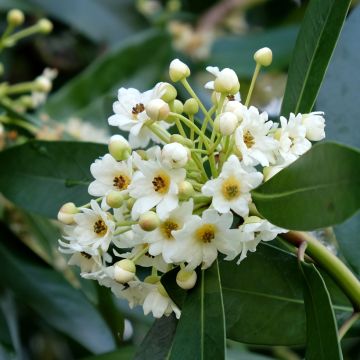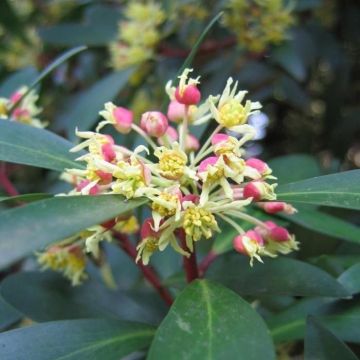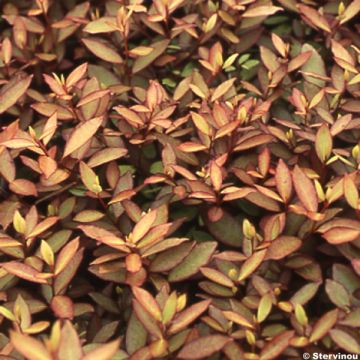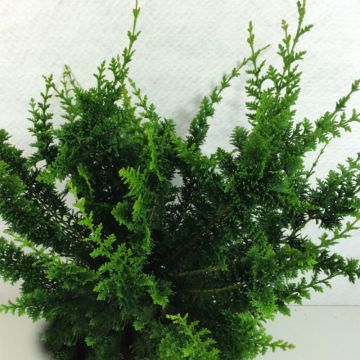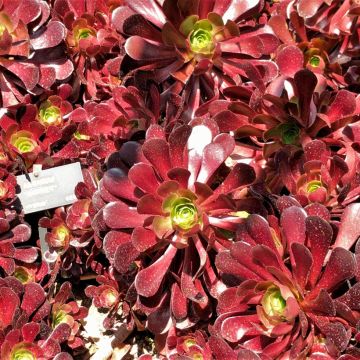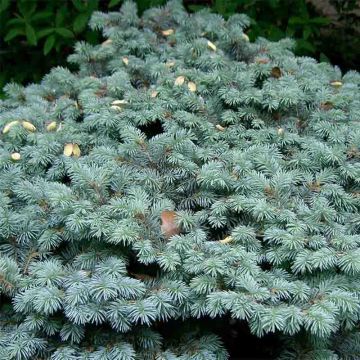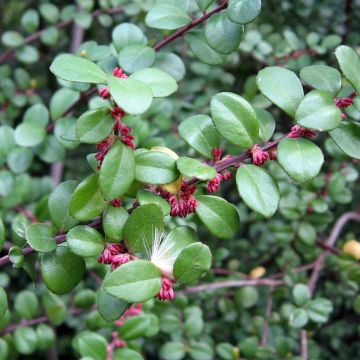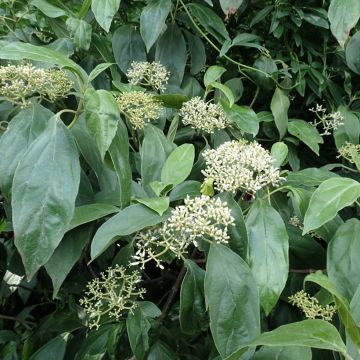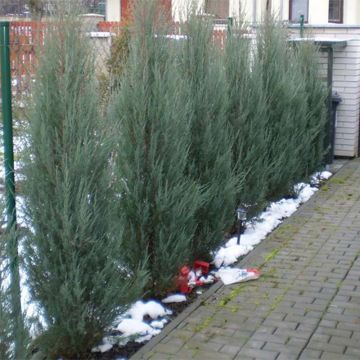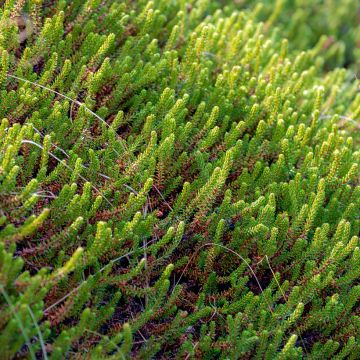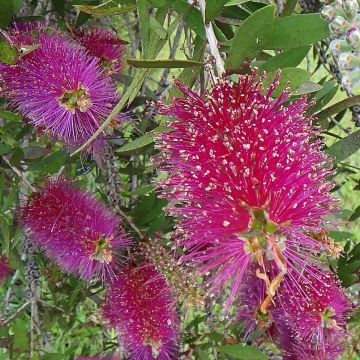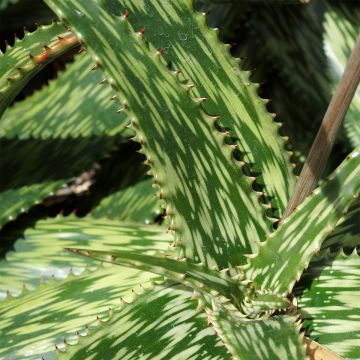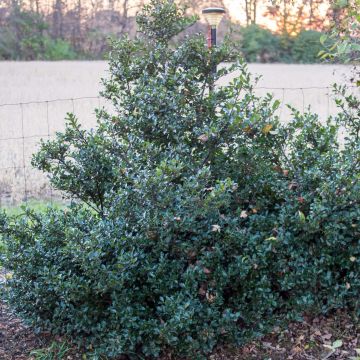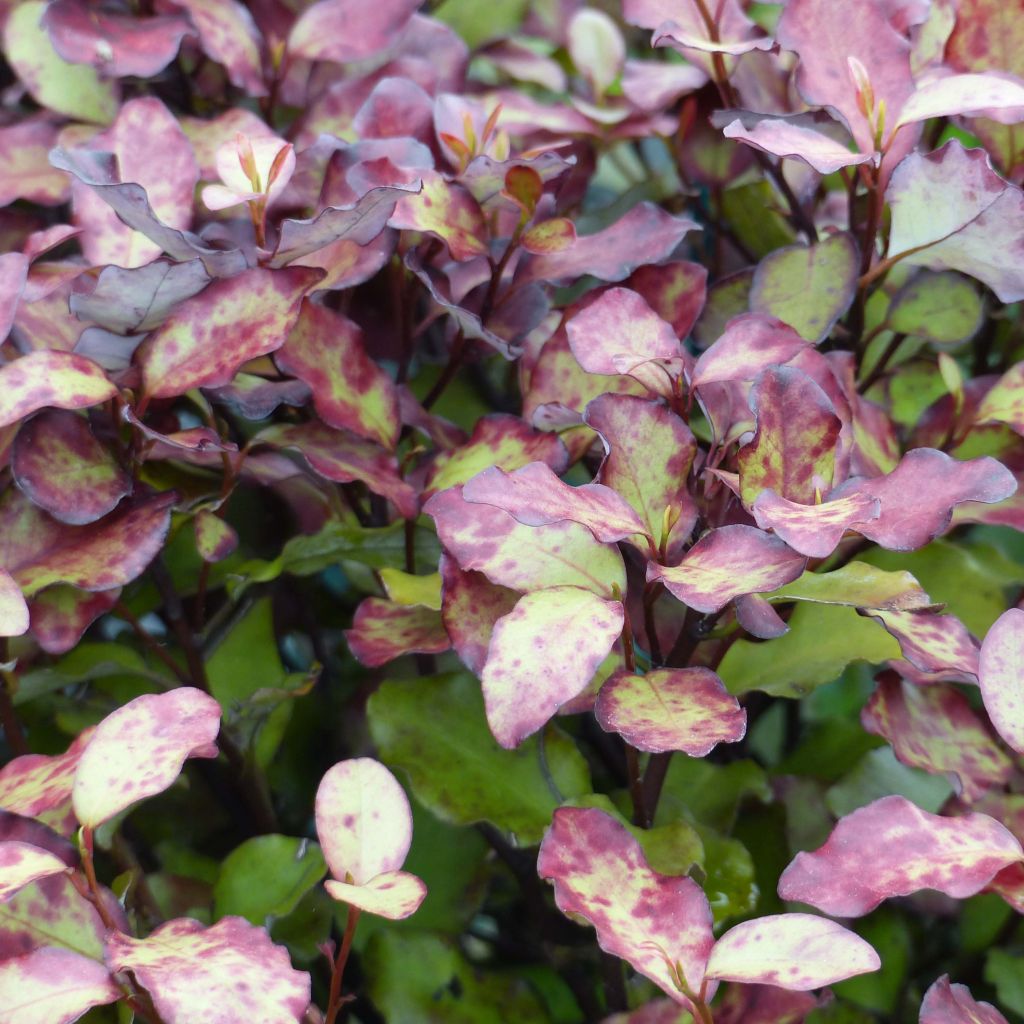

Pseudowintera (Drimys) colorata Red Leopard
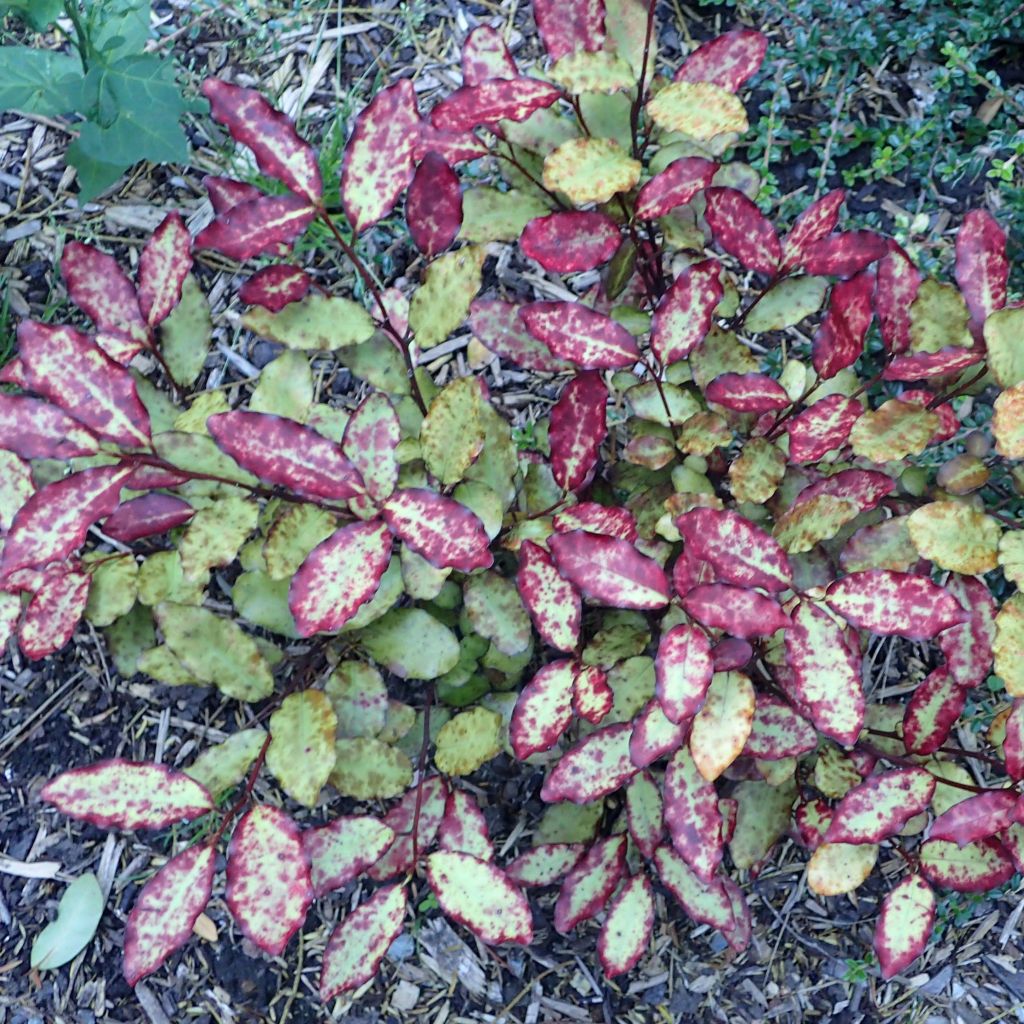

Pseudowintera (Drimys) colorata Red Leopard
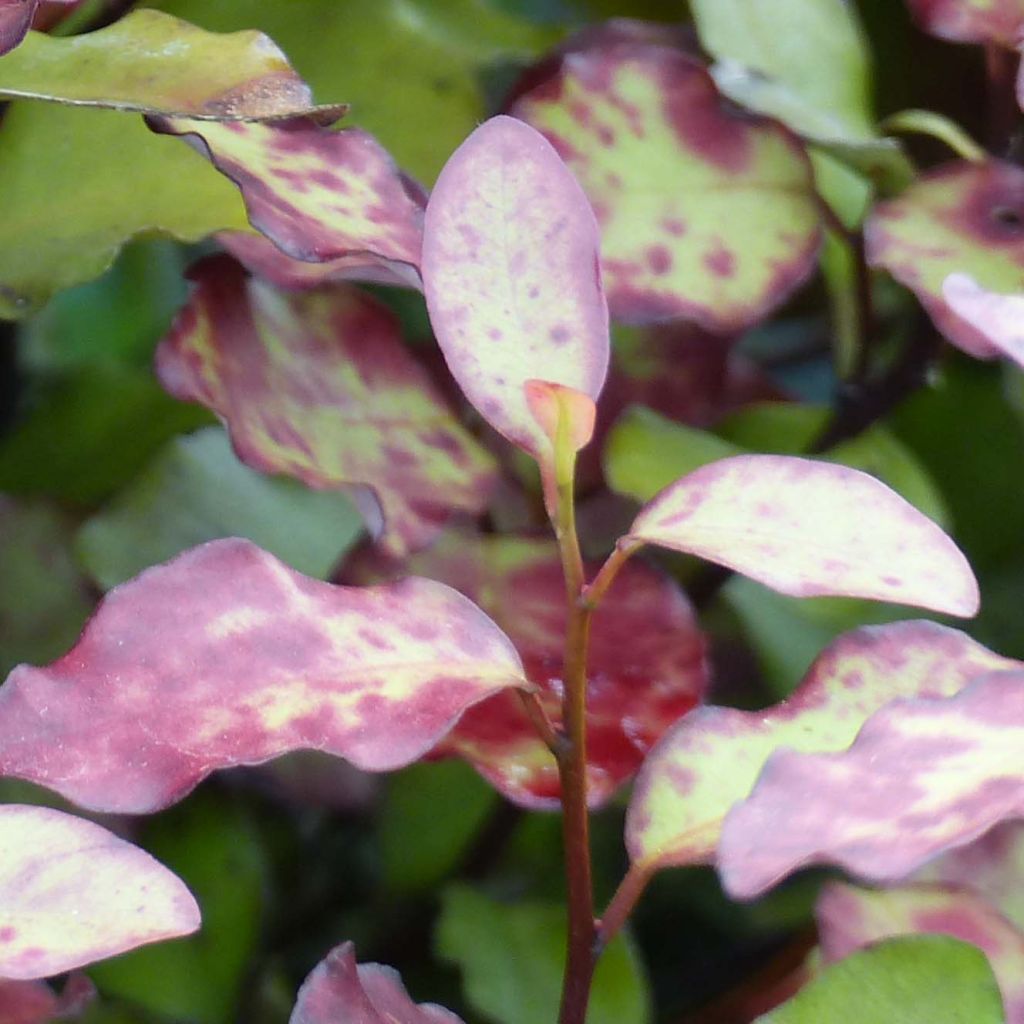

Pseudowintera (Drimys) colorata Red Leopard
Pseudowintera colorata Red Leopard
Pseudowintera colorata Red Leopard
Pepper Tree
This item cannot be shipped to the selected country
Delivery charge from €5.90
More information
Schedule delivery date,
and select date in basket
This plant carries a 24 months recovery warranty
More information
We guarantee the quality of our plants for a full growing cycle, and will replace at our expense any plant that fails to recover under normal climatic and planting conditions.
From €5.90 for pickup delivery and €6.90 for home delivery
Express home delivery from €8.90.

Does this plant fit my garden?
Set up your Plantfit profile →
Description
Pseudowintera colorata Red Leopard, also known as Drimys colorata, is a compact bush universally appreciated for its remarkably colourful evergreen foliage. Its tough leaves, with a silver reverse, are irregularly speckled with red on a cream background, with the red patterns taking on lighter or darker shades depending on the season. Blooming all year round, and of modest size, it is particularly recommended for patio decoration, as well as for small gardens. However delightful it may be, the Red Leopard Pseudowintera has a few requirements: it requires a limestone-free, well-drained soil that remains moist throughout the year, and a rather mild winter climate.
This characterful bush, sometimes called Pepper Tree because of the pungent aroma of its foliage, belongs to the Winteraceae family. It is native to New Zealand, where it is most commonly found on the edges of forests, on non-limestone soil. 'Red Leopard' is a particularly colourful cultivar with a very compact habit, recently developed in New Zealand. It grows slowly to reach approximately 80cm (32in) in height and 50-60cm in width at maturity.
Its dazzling foliage, as beautiful as a flower, is its main asset. Its evergreen leaves, entire, oval to oblong, with a pointed tip, slightly undulating at the edges, measure 4 to 5cm (2in) in length and 2.5 to 3cm (1in) in width. Initially almond green with brick margins when budding, they take on a cream colour widely speckled with scarlet red in summer under the sun's influence. With the arrival of cold weather, the red colour intensifies and spreads across the lamina. The winter foliage is coloured purple and red on a chartreuse green background. The flowering, very discreet, in the form of small clusters of greenish flowers, is followed by the formation of fruit resembling small olives, which turn black when ripe.
A baroque setting would highlight and enhance its silhouette and spectacular foliage. Combine this bush with varieties in shimmering, rich and indulgent tones, such as Clematis Westerplatte, Knautia macedonica, parrot tulips, and other Ajuga reptans groundcover to complete an elegant and energetic planting scheme. This relatively frost-sensitive bush must be protected in winter if planted in the ground in a moderate climate, and stored away if grown in a pot.
This bush is a true botanical monument as it has existed for over 65 million years. Its peppery-tasting leaves can be used in traditional medicine as a fungicidal and analgesic.
Report an error about the product description
Pseudowintera colorata Red Leopard in pictures
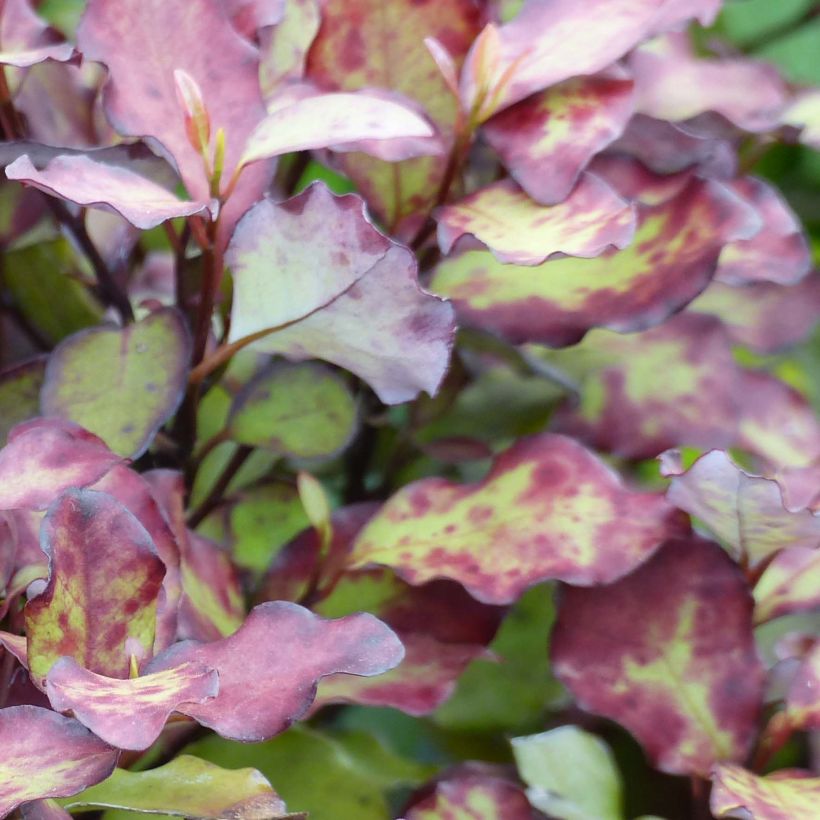

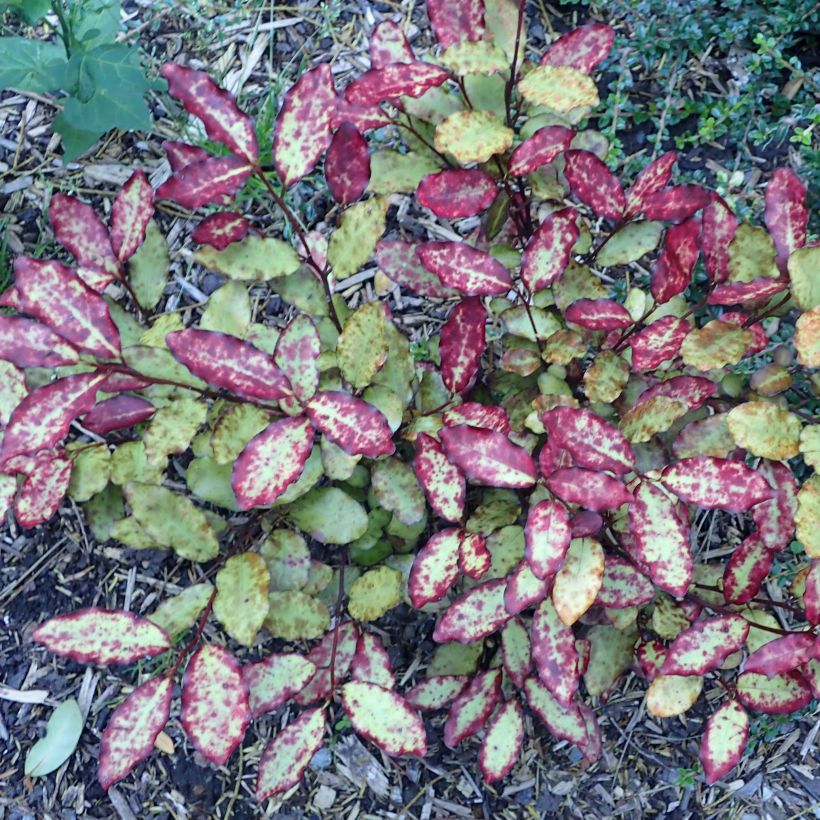

Plant habit
Flowering
Foliage
Botanical data
Pseudowintera
colorata
Red Leopard
Winteraceae
Pepper Tree
Oceania
Other Drimys
Planting and care
Place the Pseudowintera colorata in a sheltered position, at the base of a wall or in front of a hedge, in morning sun or partial shade as this tree is relatively sensitive to cold. That's why we recommend protecting it if it's in the ground or storing it if it's in a pot during the winter period. Finally, choose a rich and moist, light, well-drained soil, free from active limestone. Watering should be done with non or slightly calcareous water. It should be noted that the Pseudowintera colorata is naturally resistant to diseases.
Planting period
Intended location
Care
-
, onOrder confirmed
Reply from on Promesse de fleurs
Evergreen shrubs
Haven't found what you were looking for?
Hardiness is the lowest winter temperature a plant can endure without suffering serious damage or even dying. However, hardiness is affected by location (a sheltered area, such as a patio), protection (winter cover) and soil type (hardiness is improved by well-drained soil).

Photo Sharing Terms & Conditions
In order to encourage gardeners to interact and share their experiences, Promesse de fleurs offers various media enabling content to be uploaded onto its Site - in particular via the ‘Photo sharing’ module.
The User agrees to refrain from:
- Posting any content that is illegal, prejudicial, insulting, racist, inciteful to hatred, revisionist, contrary to public decency, that infringes on privacy or on the privacy rights of third parties, in particular the publicity rights of persons and goods, intellectual property rights, or the right to privacy.
- Submitting content on behalf of a third party;
- Impersonate the identity of a third party and/or publish any personal information about a third party;
In general, the User undertakes to refrain from any unethical behaviour.
All Content (in particular text, comments, files, images, photos, videos, creative works, etc.), which may be subject to property or intellectual property rights, image or other private rights, shall remain the property of the User, subject to the limited rights granted by the terms of the licence granted by Promesse de fleurs as stated below. Users are at liberty to publish or not to publish such Content on the Site, notably via the ‘Photo Sharing’ facility, and accept that this Content shall be made public and freely accessible, notably on the Internet.
Users further acknowledge, undertake to have ,and guarantee that they hold all necessary rights and permissions to publish such material on the Site, in particular with regard to the legislation in force pertaining to any privacy, property, intellectual property, image, or contractual rights, or rights of any other nature. By publishing such Content on the Site, Users acknowledge accepting full liability as publishers of the Content within the meaning of the law, and grant Promesse de fleurs, free of charge, an inclusive, worldwide licence for the said Content for the entire duration of its publication, including all reproduction, representation, up/downloading, displaying, performing, transmission, and storage rights.
Users also grant permission for their name to be linked to the Content and accept that this link may not always be made available.
By engaging in posting material, Users consent to their Content becoming automatically accessible on the Internet, in particular on other sites and/or blogs and/or web pages of the Promesse de fleurs site, including in particular social pages and the Promesse de fleurs catalogue.
Users may secure the removal of entrusted content free of charge by issuing a simple request via our contact form.
The flowering period indicated on our website applies to countries and regions located in USDA zone 8 (France, the United Kingdom, Ireland, the Netherlands, etc.)
It will vary according to where you live:
- In zones 9 to 10 (Italy, Spain, Greece, etc.), flowering will occur about 2 to 4 weeks earlier.
- In zones 6 to 7 (Germany, Poland, Slovenia, and lower mountainous regions), flowering will be delayed by 2 to 3 weeks.
- In zone 5 (Central Europe, Scandinavia), blooming will be delayed by 3 to 5 weeks.
In temperate climates, pruning of spring-flowering shrubs (forsythia, spireas, etc.) should be done just after flowering.
Pruning of summer-flowering shrubs (Indian Lilac, Perovskia, etc.) can be done in winter or spring.
In cold regions as well as with frost-sensitive plants, avoid pruning too early when severe frosts may still occur.
The planting period indicated on our website applies to countries and regions located in USDA zone 8 (France, United Kingdom, Ireland, Netherlands).
It will vary according to where you live:
- In Mediterranean zones (Marseille, Madrid, Milan, etc.), autumn and winter are the best planting periods.
- In continental zones (Strasbourg, Munich, Vienna, etc.), delay planting by 2 to 3 weeks in spring and bring it forward by 2 to 4 weeks in autumn.
- In mountainous regions (the Alps, Pyrenees, Carpathians, etc.), it is best to plant in late spring (May-June) or late summer (August-September).
The harvesting period indicated on our website applies to countries and regions in USDA zone 8 (France, England, Ireland, the Netherlands).
In colder areas (Scandinavia, Poland, Austria...) fruit and vegetable harvests are likely to be delayed by 3-4 weeks.
In warmer areas (Italy, Spain, Greece, etc.), harvesting will probably take place earlier, depending on weather conditions.
The sowing periods indicated on our website apply to countries and regions within USDA Zone 8 (France, UK, Ireland, Netherlands).
In colder areas (Scandinavia, Poland, Austria...), delay any outdoor sowing by 3-4 weeks, or sow under glass.
In warmer climes (Italy, Spain, Greece, etc.), bring outdoor sowing forward by a few weeks.

































